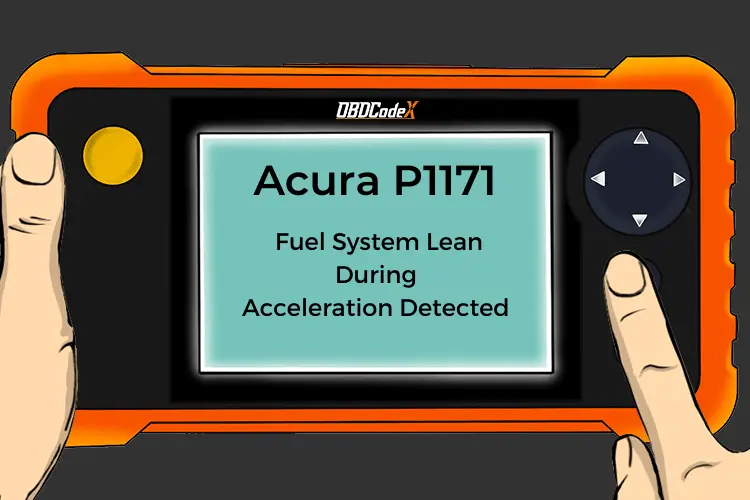P2272: O2 Sensor Signal Stuck Lean Bank 2 Sensor 2
Is your scanner showing P2272?
No worries. We'll show you what it means and how to deal with it.
P2272: O2 Sensor Signal Stuck Lean Bank 2 Sensor 2
OVERVIEWWhat Does The P2272 Code Mean?
This P2272 trouble code refers to the post-catalytic converter O2 (oxygen) sensor on bank #1, sensor #2. This post-cat sensor is used for monitoring the efficiency of the catalytic converter. The converter’s job is to reduce emissions out the tailpipe. When the signal from the O2 sensor is detected by the PCM as being stuck lean or biased lean, this DTC is set.
The P2272 DTC refers to downstream sensor (after the catalytic converter), sensor #2 on bank #2. Bank #2 is the side of the engine that does not contain cylinder #1. There may be a third sensor downstream, if that is the problem, a P2276 is set.
This code is basically telling you that the signal put out by the particular oxygen sensor is stuck lean (meaning too much air in the exhaust).
Note: Some manufacturers such as Ford may refer to this as a Catalyst Monitor Sensor, same thing, different name. This DTC is very similar to P2197. If you have multiple DTC codes, fix them in the order they appear.
What Are The Symptoms Of The P2272 Code?
Most likely you will not notice any drivability issues since this is not sensor #1. You will notice Malfunction Indicator Lamp (MIL) illumination. In some cases however, the engine may run rough.
What Are The Potential Causes Of The P2272 Code?
The causes for this DTC may include:
- Exhaust leak near O2 sensor
- Contaminated or failed HO2S2 (Sensor 2)
- HO2S2 wiring/circuit problem
- Loose installation of HO2S2
- Fuel pressure incorrect
- Faulty fuel injector
- Engine coolant leak
- Faulty purge solenoid valve
- PCM has failed
How Can You Fix The P2272 Code?
Visually inspect the wiring and connectors for corrosion, rubbed / chafed / bent wires, wiring pins bent/loose, burnt appearance, and/or crossed wires. Repair or replace as required. This would be a good idea to visually check the wiring for all of the sensors.
Check for exhaust leaks, repair as necessary.
Using a digital volt ohm meter (DVOM) set to ohms, check harness connector(s) for resistance. Compare to manufacturer specifications. Replace or repair as required.
Monitor the sensor readings
If you have access to an advanced scan tool, use it to monitor the sensor readings as viewed by the PCM (engine running, at normal operating temperature in closed loop mode). Watch the bank 2, sensor 2 reading. The rear heated oxygen sensor (HO2S) normally sees a fluctuating voltage between 0 & 1 volt, for this DTC you’ll likely see the voltage “stuck” at 0V. Revving the engine should cause the sensor’s voltage to change (react).
The most common fixes for this DTC seem to be either an exhaust air leak, a wiring problem with the sensor/wiring, or the sensor itself. If you replace the O2 sensor, buy an OEM one (manufacturer brand) for best results.
If you remove the HO2S oxygen sensor, inspect it for contamination from fuel, engine oil, and coolant.
Other troubleshooting ideas: Use a fuel pressure tester, check the fuel pressure at the Schrader valve on the fuel rail. Compare to manufacturers specification. Inspect the purge solenoid valve. Inspect fuel injectors. Inspect coolant passages for leaks.
There may be technical service bulletins (TSBs) that apply to your make and model pertaining to this trouble code, check with your dealership service department or online source to locate any specific TSBs that apply to your vehicle.
Recommended Parts
Below are some recommended auto parts to help you address the trouble code affecting your vehicle and get it running smoothly again:
>>> O2 Sensor
>>> Fuel Injector
>>> Purge Solenoid Valve
>>> ECU
>>> KAIWEETS Digital Multimeter
Note: During the purchasing process, please check carefully whether the part you want to buy fits your car!
Check This Video For Reference
Reference Sources
Diagnostic Trouble Code (DTC) Charts and Descriptions – Page 4-145.




